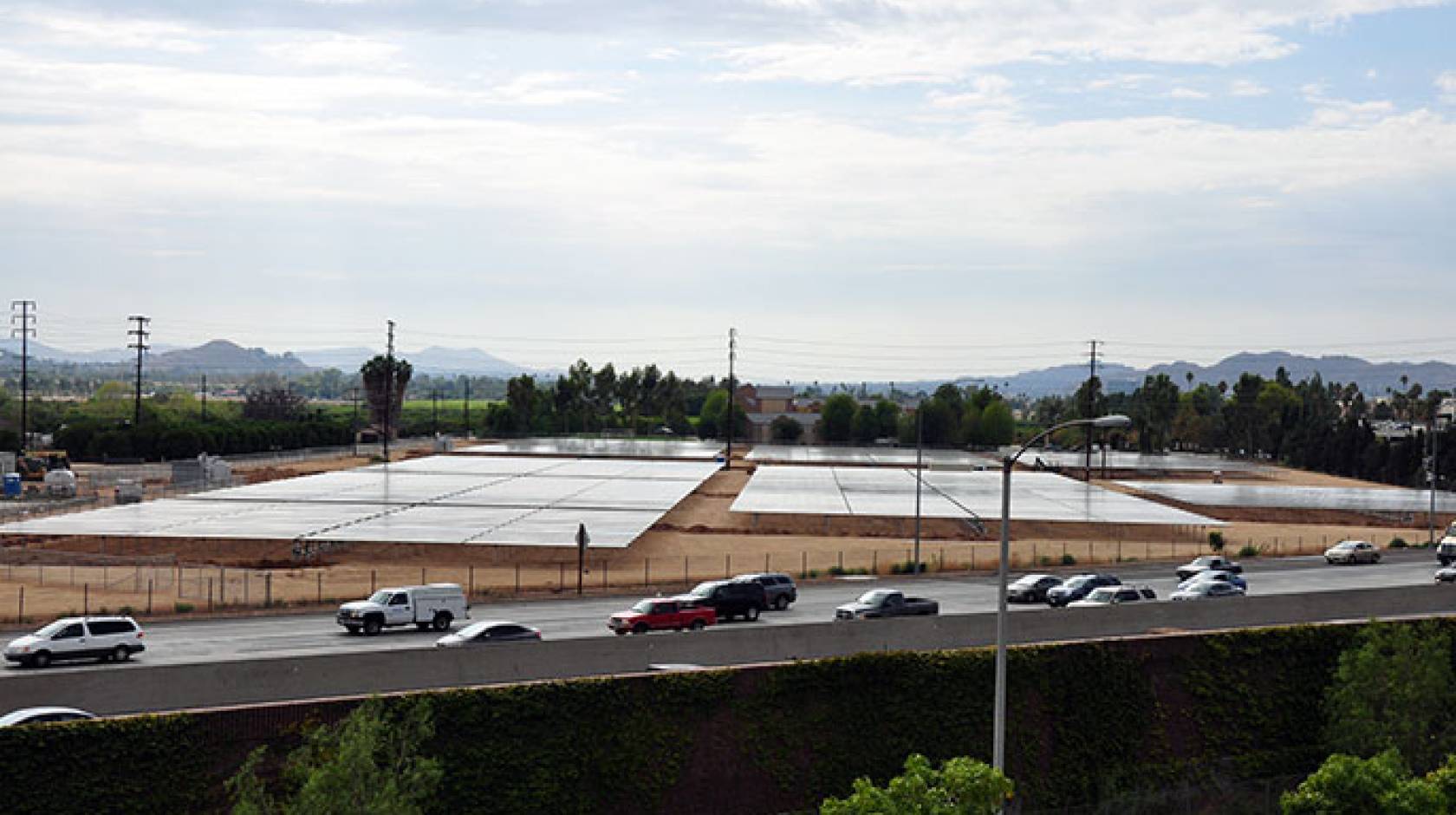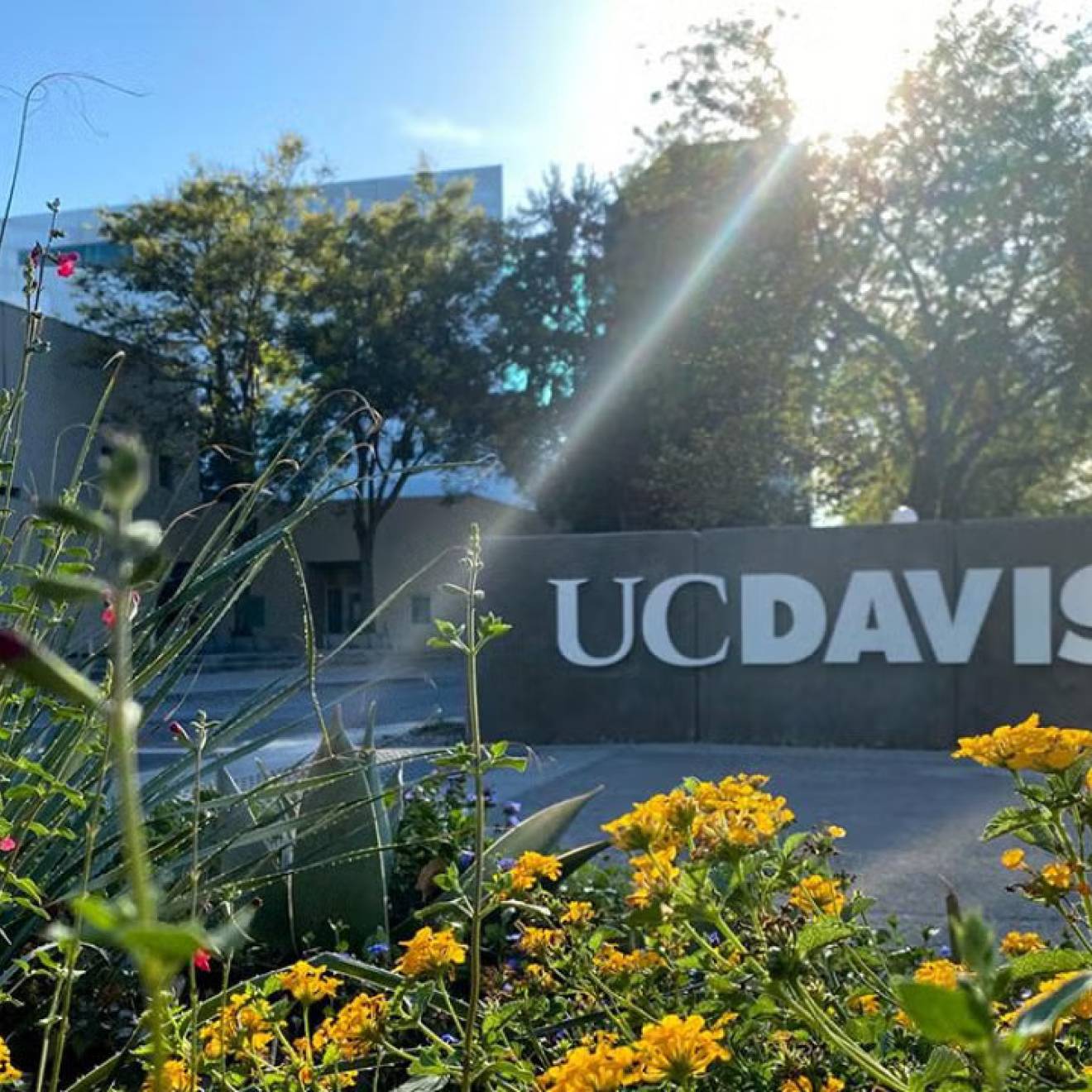Kris Lovekin, UC Riverside

UC Riverside has opened a brand new solar farm that will produce up to 6.6 million megawatt hours of electricity each year. That is the equivalent of powering 960 homes for a year.
The ribbon cutting at the solar farm, located next to UCR’s Community Garden, was attended by Chancellor Kim A. Wilcox, local government officials, student leaders, and representatives of SunPower Corporation.
The project supports the systemwide University Policy on Sustainable Practices, which called on each campus to contribute to the production of up to 10 megawatts of onsite renewable power by 2014. UCR accounts for four megawatts of this commitment. Wendell Brase, UC Irvine’s vice chancellor for administrative and business services and the co-chair of UC President Janet Napolitano’s Global Climate Leadership Council, lauded UCR’s efforts at the launch. “UCR went from zero to sixty [in terms of using solar power],” he said.
Today, UCR currently has the largest solar array in the UC system. Other campuses are also quickly adding more solar technology. For instance, UC Irvine opens a large system next year, and UC Davis is set to operate a 16-MW solar farm in the future.
UCR signed a 20-year power purchase agreement that allowed SunPower Corporation to construct, operate and maintain the facility, with the university purchasing the power. UCR spent $350,000 on site clearing and preparation, as well as interconnections costs with the existing substation. The projected savings to the university is $4.3 million over the length of the contract. UCR will also receive carbon and LEED credits that provide additional financial and environmental savings.
The solar farm went online as scheduled on Friday, Sept. 19. It has 7,440 panels across the 11-acre site using GPS tracking to slowly follow the sun across the sky. The massive sea of shiny panels is visible from Highway 60 as thousands of cars pass the campus.
John Cook, director of the UCR’s Office of Sustainability, acknowledges that the solar farm is a big step. It will amount to 3 percent of the campus’s total energy needs. “And we plan to do more.”

